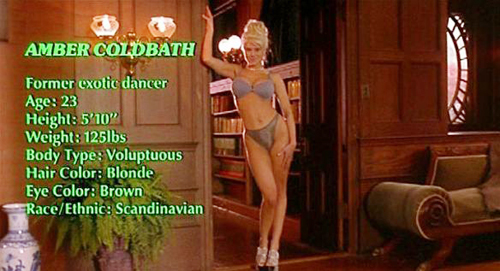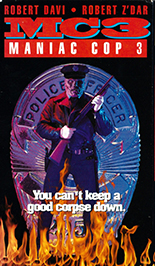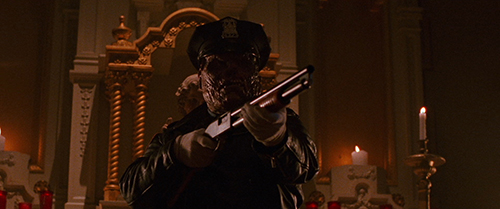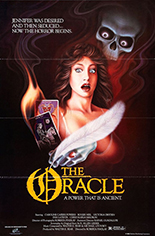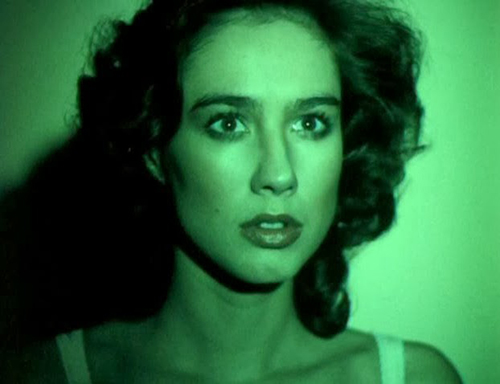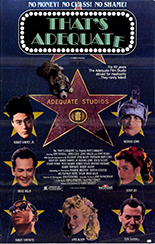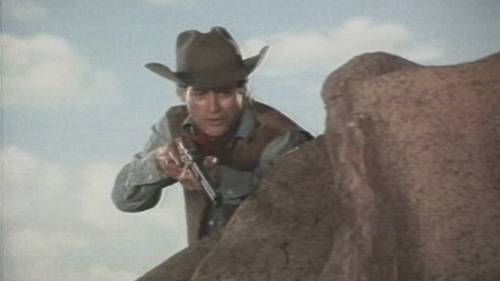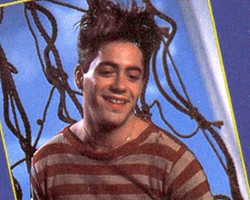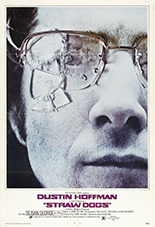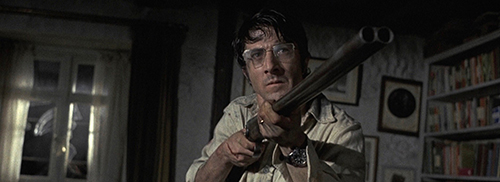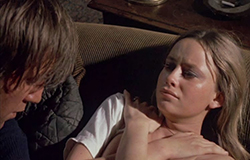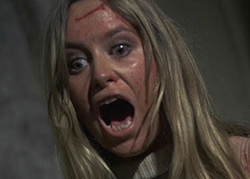
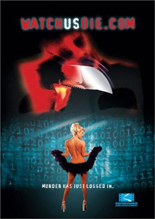 On the website WatchUsDorm.com, seven sexy supposed co-eds have their every move livestreamed 24/7 to the delight of chronic masturbators everywhere.
On the website WatchUsDorm.com, seven sexy supposed co-eds have their every move livestreamed 24/7 to the delight of chronic masturbators everywhere.
And in the movie WatchUsDie.com, the WatchUsDorm.com vacancy rate increases by one as a Noh-masked killer dispatches them, bimbo by bimbo. It’s the opportune time for new girl Brenna (one-timer Jennifer Cooper) to move in, seeing how she’s secretly a journalist going undercover to write a juicy exposé.
With Bambi eyes and an open mouth suggesting a constant mental state of golly-gee-willikers, Brenna joins a Noah’s Ark of i-candy, including an Asian massage therapist, a French maid, a fortune teller, a master of Conan the Barbarian-style swordplay and, saving the breast for last, a stripper named Amber Coldbath (because Amber Coldshower is too on-the-nose?). Played by Playboy Cyber Girl (remember those?) Amy Miller with so much boop-oop-a-doop that even Judy Landers would cringe, Amber is a Bill Ward cartoon in human form, dutifully prancing around in push-up bra and silk panties like a more bubbly (yet more coherent) Anna Nicole. She and the others are introduced to viewers by onscreen text that’s part Playmate Data Sheet, part spy dossier and all TMI.
As the murders occur, frat boys, perspiring incels and concerned Billie Bird types remain glued (but by what?) to their monitors. (How they manage to see anything on the pixelated, postage stamp-sized feed captured from angles befitting bank security cameras, one-time director Ryan Woo doesn’t address.) From strategically placed high heels to electricity-rigged hot tubs, who’s responsible for these instruments of doom? Could it be Even (Doug Blimline), the himbo handyman? Or the owner, the greasy goombah they call Falconer (Peter Vita)? Only the team of Agatha Christie and Joe Francis know for sure.
Just kidding — it’s exactly who Woo and Keith W. Strandberg (screenwriter of the No Retreat, No Surrender trilogy) set it up to be, right along with the awkward underlining of Breena’s otherwise outta-nowhere sign-language skills. That’s how foreshadowing works.
If WatchUsDie weren’t so harebrained in construction and execution that it comes off like its own parody, its icky invite to delight in the ladies’ looks as much as the way they look with their face bashed against bath tile, viewing might require a shower afterward — and not the Coldshower kind. Enjoy the film on that level, because there is no suspense beyond whether the dial-up modem in the opening credits will drop its connection.
Wait, that’s not entirely true; I kinda wanted to see if Miller would lose playing Strip Clue. —Rod Lott

